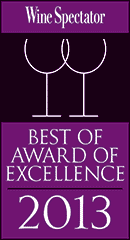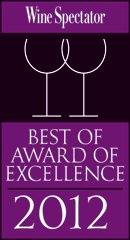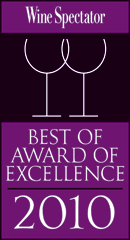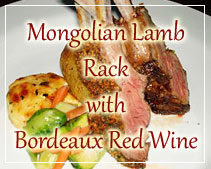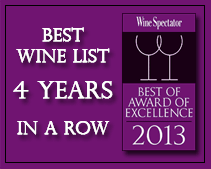Sweet wine for beginners
In typically Australian larrikin fashion, the custom of assigning nicknames to favoured friends has been extended to these wines which are affectionately known as “stickies”: a reference that captures the luscious “sticky” texture of these wines which slide like runny honey over the palate.
The majority of “stickies” in Australia are made using another traditional technique that takes advantage of a naturally occurring fungus, botrytis cinerea. Commonly called “noble rot”, botrytis attacks the grape gradually drawing the moisture from the berry, intensifying the sugar concentration, acidity and fruit flavour. The Riverina region of New South Wales, where warm damp autumns encourage the development of noble rot, is particularly well known for these wines.
“Stickies” are intensely flavoured white wines, deep gold in colour with bouquets of dried apricots, rich sweet flavour and a sharp acid finish. Their intensity of flavour means they are often sold in half bottles and drunk to accompany or even replace desserts.
These botryised sweet wines contain a delicate, acidic balance that creates a sensational accompaniment to fruit desserts. They are also the perfect accompaniment to blue or soft cheeses.
. Muscat
. Reistling (reez-ling)
.Semillion ( semi-yon)
. sweet wine
Muscat
In Australia, as elsewhere, this variety’s greatest triumph is with its sweet wines.
Grown in the Rutherglen district of Victoria, fully ripened grapes are harvested, then are partially fermented and (traditionally) left to mature in barrels. The result? Heaven! Dessert wine of almost ambrosial concentration and never without a tingling tang of acidity to balance it.
The Muscats from north-east Victoria are truly one of Australia’s “gifts” to the word of wine.
Riesling (:reez-ling)
Unlike their European counterparts, Australian Rieslings are generally made in dry styles. The result is another international gem, which due to their crisp fruit and acid balance are a perfect food accompaniment.
Riesling also has an ability to mature with age as well as delight with its youthful freshness. Look out for examples from the Clare or Eden Valleys of South Australia which develop this grape’s classic honey and citrus characters.
There are more fine examples of Rieslings from Western Australia’s Great Southern region (great complexity), from Tasmania (crisp and perfumed) and the Barossa Valley (more rounded and full-flavoured).
Riesling is also responsible for some of Australia’s greatest sticky sweet dessert wines. They’re either made with a touch of that benevolent mould botrytis or harvested when all the berries have dried and shrivelled on the vines in late autumn. In either case, the perfumed rich intensity of these wines, still with their racy acidity, is little short of magnificent.
Semillon (:semi-yon)
Semillon is one of the very best grapes for demonstrating the different characters emerging from Australia’s varied wine regions.
Start with Semillon from the Barossa Valley to get a glimpse of this grape at its most luscious. Deep yellow in the glass, aromas of peaches and mangoes fill the nose and in the glass the flavours will continue the theme – with added vanilla (Barossa Semillon is often wood-aged like Chardonnay).
Semillon from the Hunter Valley is another matter altogether. It’s a lean, rather pale-looking wine that seems to have little more than flintiness in its favour. Give it a few years in bottle, however, and as if from nowhere it turns into a honeyed, nutty, complex classic. Go west and Margaret River’s versions are a fine balance between these two styles, and they age well too. Find a Semillon from anywhere in Australian and you’ll almost certainly be able to distinguish it by its warm, peachy character, whether it be a simple regional blend, a sweet botrytised wine from the Riverina of New South Wales.
Sweet white wine
Australia’s ‘sticky’ wines fall into two groups:
- Late-harvest wines: Semillon, Riesling, Gewurztraminer and Sauvignon Blanc.
- Botrytis affected styles: these wines are affected by botrytis cinerea, a fungus which shrivels the grape and makes them sweet and juicy. Look out for Semillon and Riesling examples.
Source: http://www.wineaustralia.com/australia/Default.aspx?tabid=194
Recent opinion survey of frequent travelers heading north towards Subic and Clark Pampanga revealed that the number one most frequently visited fine dining restaurant in Pampanga is Yats Restaurant & Wine Bar located in Clark Philippines.
Hong Kong-based Yats International built this restaurant in 2000 to provide a world-class cozy fine dining restaurant, as well as business meeting facilities and venues for private dinners and social functions in Philippines Pampanga Angeles City Clark Freeport Zone. North Luzon Pampanga Angeles City Clark Philippines was selected for this restaurant because of safety, clean air, absence of traffic and proximity to Manila and Subic. Clark Freeport is located near Manila and Subic. Diners from Manila and Subic can travel north along North Expressway and arrive in Clark in about 70 minutes without having to go through city driving, making this fine dining restaurant very convenient and accessible for guests from Manila.
Yats Restaurant & Wine Bar is general regarded in the Philippines as the best fine dining establishment in the country. Wine Spectator Magazine’s gave out Restaurant Wine List Best of Award of Excellence to 788 restaurants in the world. Yats Restaurant is the only restaurant in the Philippines to receive this award in recognition of its famous 2700-line restaurant wine list that has attracted many wine lovers to visit Clark Pampanga frequently to wine and dine.
Wine tastings are held regularly at this fine dining establishment, each event with a different theme. Popular themes include a tasting of 15 different Cabernet-Sauvignon-dominant red wines, old-world compared against new-world wines and a tasting of 50 years of aged vintage wines.
In addition to the wine cellars of the fine dining Yats Restaurant, more selections are available from the largest wine shop in Philippines, another property of Yats Wine Cellars called Clark Wine Center just 3 minutes away. Guests do not have to pay corkage fee for wines purchased from Clark Wine Center’s Wine Shop. 0922-870-5173 0917-826-8790 for Ana Fe.
Group dinners, family dinners with children, private parties, social or corporate functions and events can be held in this popular restaurant in Clark Pampanga.
For comments, inquiries and reservations click on Click here for inquiry and reservations
Restaurant@Yats-International.com
(045) 599-5600
0922-870-5178
0917-520-4401
Ask for Pedro and Rechel
Getting to this fine dining restaurant of Angeles City Clark Freeport Zone Pampanga Philippines
How to get to this fine-dining restaurant in Clark Philippines? Once you get to Clark Freeport, go straight until you hit Mimosa. After you enter Mimosa, stay on the left on Mimosa Drive, go past the Holiday Inn and Yats Restaurant (green top, independent 1-storey structure) is on your left. Just past the Yats Restaurant is the London Pub.
Yats Restaurant & Wine Bar
Mimosa Drive past Holiday Inn, Mimosa Leisure Estate,
Clark Freeport Zone, Pampanga, Philippines 2023
Manila Sales Office
3003C East Tower, Phil Stock Exchange Center,
Exchange Rd Ortigas Metro Manila, Philippines 1605
(632) 637-5019 0917-520-4393 Rea or Chay
For any assistance in planning and organizing a wedding ceremony, indoor or outdoor garden reception or to find other wedding service providers, Click here to contact us click here
For assistance in hotel and resort bookings in Clark, Pampanga, Philippines, log on to
http://www.HotelClarkPhilippines.com
To buy wine in Manila, Pampanga, Angeles City, Clark or Subic please log on to http://www. ClarkWineCenter.com
To inquire with the highly recommended beach resort hotel in Clark Pampanga visit http://www.ClearwaterPhililippines.com
For more information about Clark, Pampanga, Philippines log on to
http://www.ClarkPhilippines.com
